About 160km northeast of Anchorage sits the Matanuska Glacier. At approximately 26 miles long and 4 miles wide, it is the largest glacier accessible by car in North America.
Whether you are driving south en route to Anchorage, or heading north up the Glenn Highway to Glennallen, the drive is sure leave you in awe. It’s around this point that the landscape takes on a more mountainous form with the epic views one expects when they come to Alaska.
I’d already driven this stretch south the week prior, so it was fun for me to watch my friend Shona, who’d flown in to Anchorage, experience it. We stopped here and there for photo opportunities along the Glenn Highway and made our way leisurely to Matanuska.
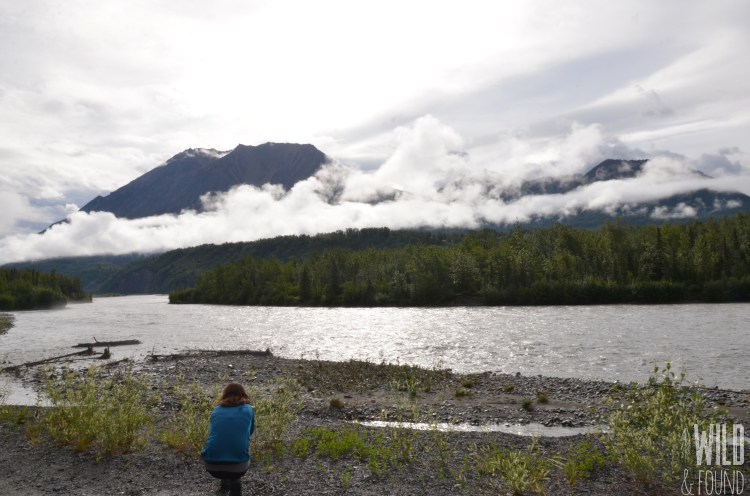
We were approaching the end of our time in Alaska and didn’t want to leave without getting up close and personal with a glacier. We’d been lucky to have opportunities to witness Sewards’ Exit Glacier and Surprise Glacier, while on a cruise to Prince William Sound, but this would be the only time we’d experience one under our feet.
Glacier Trekking with MICA Guides

I’d discovered MICA Guides and Alpenglow Luxury Camping while browsing through Instagram photos one night and immediately thought it would be a unique and memorable experience.
MICA Guides has been organizing glacier treks, ice-climbing and zip lining excursions since 1999. They also do ATV, helicopters tours and an ever-growing list of activities.
While glacier trekking was our primary goal, we also took advantage of accommodation attached to the outfitter, Alpenglow Luxury Camping. With minimal accommodations in the area, and a 2 hour drive back to Anchorage, this option is super convenient. Guests stay in canvas tents overlooking the glacier, with amenities including washroom facilities, outdoor hot tub, bonfire and an optional dinner/breakfast menu.

We arrived a little early, which gave us time to register, sign waivers and get sized with crampons for our hikes. The bus ride to the park was about 10 minutes, after which there was a 15 minute walk to the terminus of the glacier.
Our guides were university students fulfilling internship hours and seasoned professionals specializing in outdoor recreation, geology, and glacial ecosystems. Most we spoke to had worked here for multiple seasons and really enjoyed their jobs.

Platforms were strategically placed across the moraine to keep us out of the mud and away from areas with dangerous sinkholes. You just ever know what is underneath.
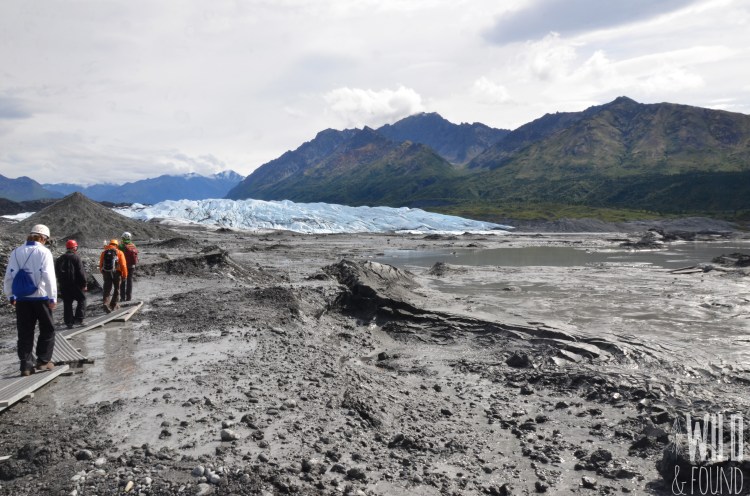
It’s easy to assume that the white part that you see of the glacier is where it begins, but it was a light bulb moment for me when I realized that there was still glacier ice below us along the moraine. This almost tripled my initial perception of its size.

Walking in wasn’t all mud and sand. We were surrounded by mountain ranges that made for some stunning views. Nature sure is full of contrasts and this was no exception.

It was exciting to finally get out of the moraine and onto the ice. The trek felt a little more real once we could hear and feel the crunching of the ice below our spikes.
Walking with the crampons took a bit of getting used to. Moving too fast, or not picking up your feet, would risk tripping and this wasn’t a place you’d want to fall. The hike itself was a moderate pace and not super challenging. Most people with a sense of balance and an average level of fitness could do this hike.

On the journey out, we stopped here and there to learn more about the science of glaciers. Shona helped drill into the glacier to get the group “fresh” water and we dropped rocks down crevasses to see how long it took to hit water. Needless to say, in some cases, we didn’t hear a response. It was a LONG way down!

It’s hard to put into perspective the size or scale of these glacier in pictures, but hopefully you can see the group of people at the bottom centre of this one. Looking out across the landscape you could see other hikers, but they were so far away I had to use my zoom to capture them.

Ice-climbing is popular here too, which I saw a few groups of out there. Not my cup of tea, but definitely something to consider if you’re coming to this area
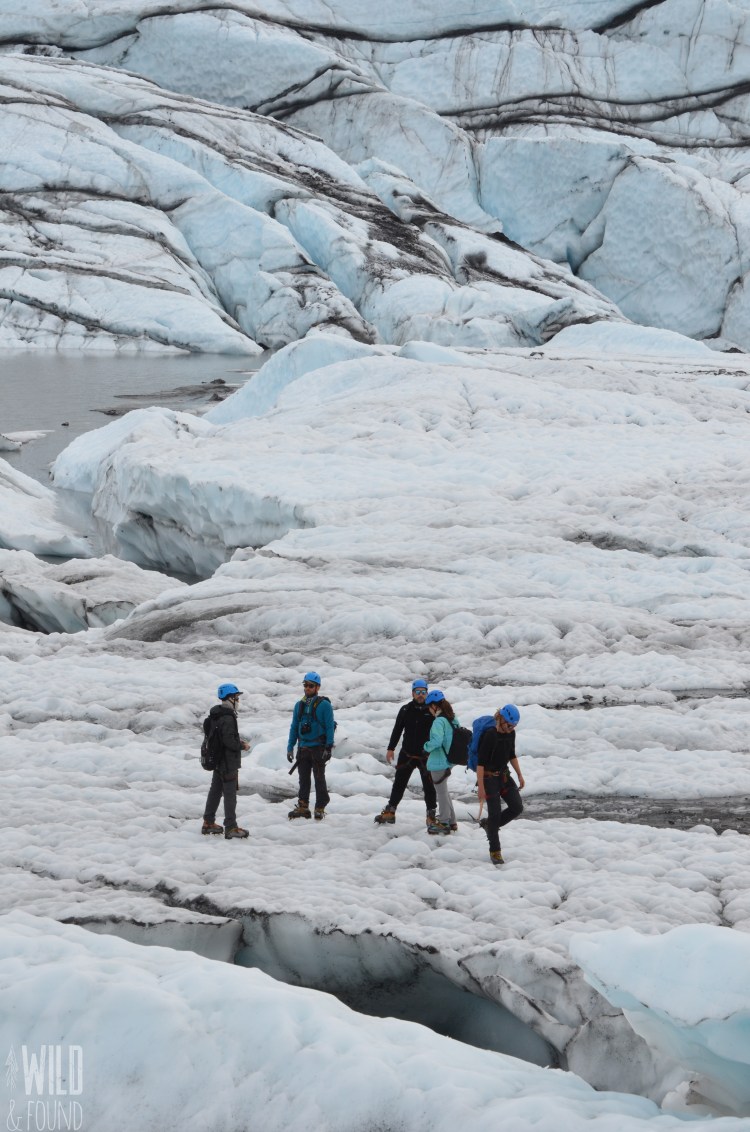
Our turnaround point was a glacier lake, a few miles in. We stuck around for a while for photos and to see if there would be any calving action. While there wasn’t anything for us to see happening, as we turned to leave there was a massive crack and we could hear a fall happening in the distance. Such a loud sound, I can only compare it to thunder and lightning.

If there was a spot to take a photo, this would be it though. I was fascinated with the lines of sediment (medial moraine) that laced themselves throughout the ice. You see these in a grander scale from aerial photos, but it was neat to see it up close.
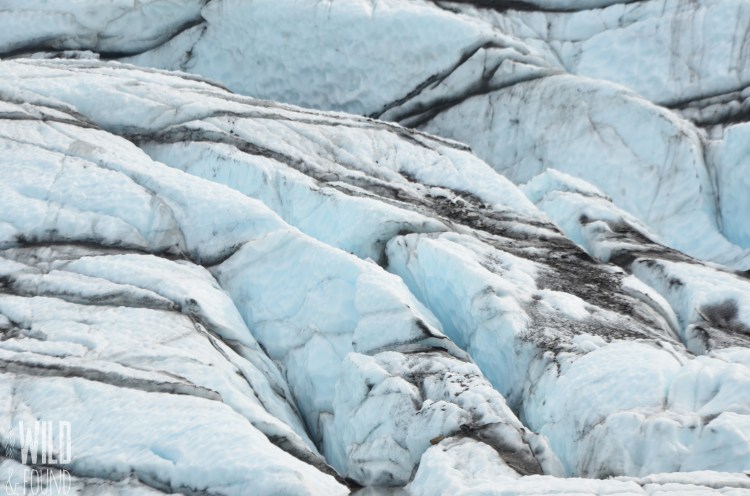
From here we started the loop back toward the bus, but not before heading up to a lookout behind the lake. This would be as far back on Matanuska Glacier we would get, and it blew my mind knowing that there was another 25km beyond where we were standing. It truly is immense!!
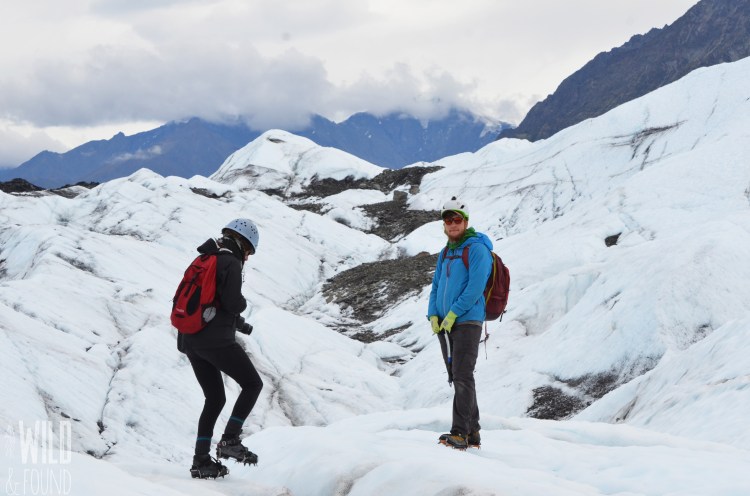
There was far more danger on the back end of the trek. We had to be especially careful in certain areas (like in the photo below), as deep crevasses and moulins (deep pools and streams of water under the ice) had formed. Seeing the power of that water moving drilled home how much was occurring inside the glacier that we couldn’t comprehend.

I appreciated how seriously our guides took their jobs. Shona was very interested in the science and ecosystem of the glacier, so she asked a lot of questions. Our guide took the time to answer them all in detail. It was interesting to listen and learn about they work.

With the climate changing as quickly as it is, it was important for me to experience this with my own eyes and feet. I’ve now seen the level that Matanuska and other glaciers are receding. I hope that by tourists coming here every year, they can feel a bit closer to that reality and do the things they can to limit impact and preserve their existence for future generations.

This trek was a very cool experience and it opened my eyes a lot to the issues of global warming. I’ve heard that they call glaciers the refrigerators of the planet and it’s easy to see why. If you ever have the chance to experience one first end, do it. They truly are a natural wonder.
Alpenglow Luxury Camping
After our trek, Shona and I were able to go over to Alpenglow Luxury Camping, where we were staying for the night. The glamping experience offered at Alpenglow was truly awesome. If you’re looking for something a little out of the ordinary, you’ll enjoy it here.
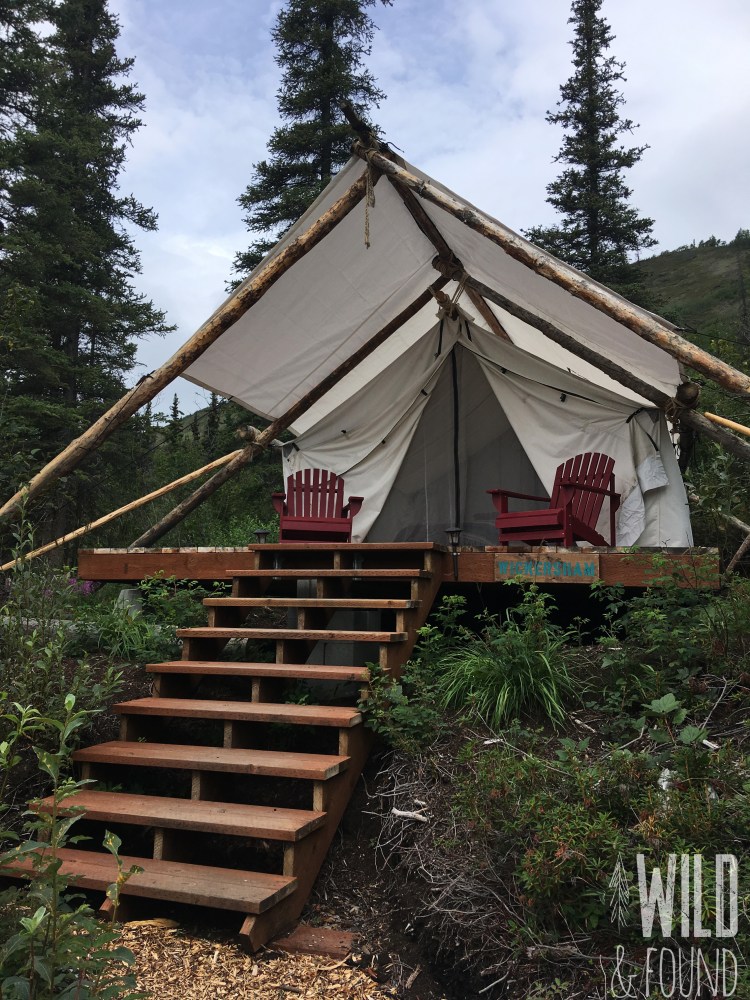
Canvas tents are set up overlooking the Matanuska Glacier fields. They offer plenty of privacy to enjoy the space without interruptions, and lots of room to share the tent.

Beds were high-end and very comfortable. Summer evenings can still be quite chilly in Alaska, so the down duvets and additional blankets were a heavenly touch. I felt like I fell asleep in a cloud that night.

Each tent was outfitted with two Muskoka chairs; a perfect spot to chill out with a glass of wine or beer after you’ve settled in. I really enjoyed the quiet of this space and it gave me an opportunity to christen my new halibut pottery mug from Homer!
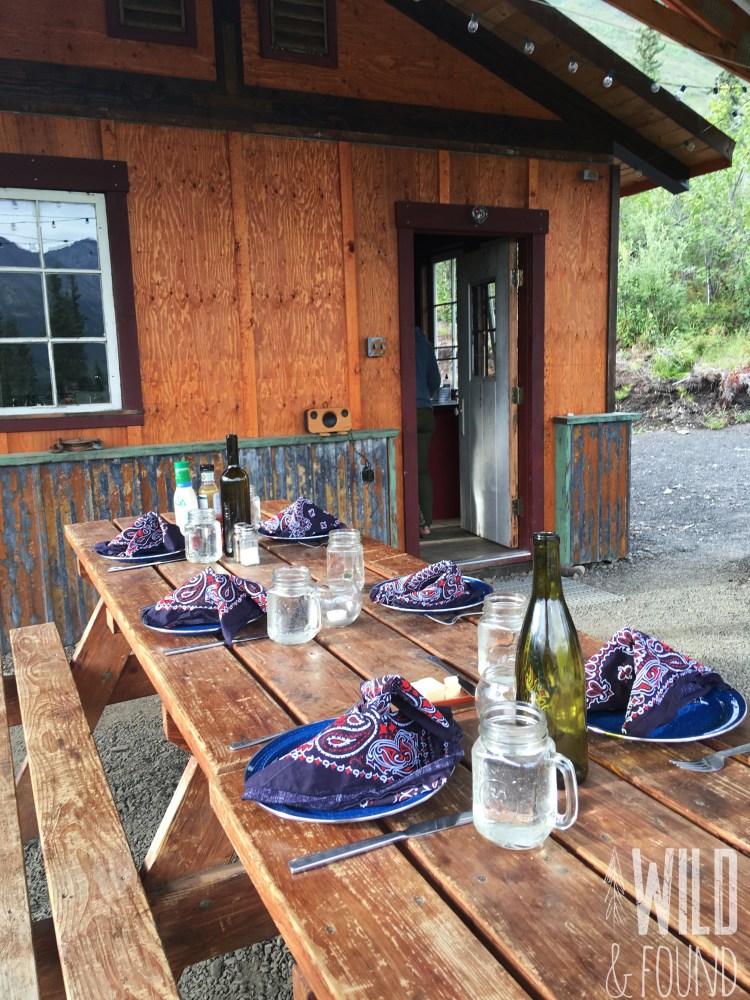
We opted for the full accommodation package, which included a home cooked meal. The menu included BBQ chicken, organic garden salad, baked potato with all the fixings, freshly made artisan bread, choice of beer or wine and a freshly baked berry cobbler.
It was all as good as it sounds. Fabulous meal!

After dinner, we enjoyed a soak in the wood-fire warmed hot tub. This was a great place to relax, meet some of the other guests and get away from the chill of the oncoming evening.
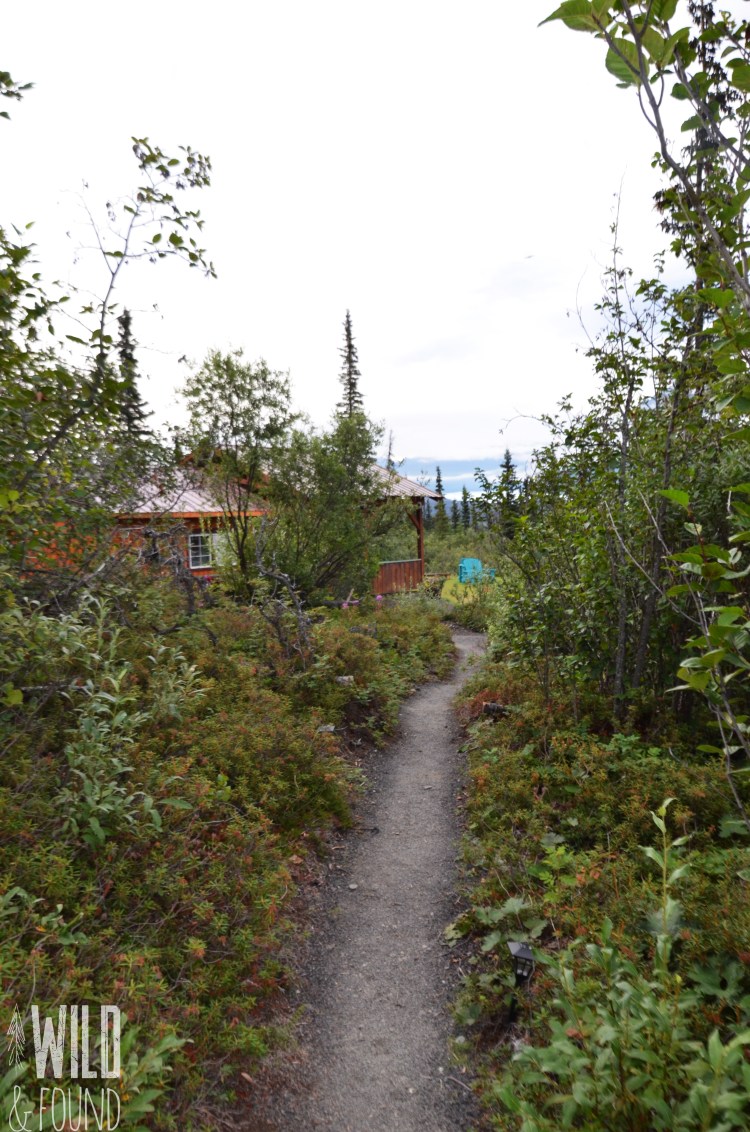
The combination of fresh air, trekking, a delicious dinner and relaxing hot tub, had me sleeping like a baby that night. The morning greeted us with another treat, fresh breakfast in the kitchen.
The MICA ladies brewed us fresh coffee, baked muffins and boiled eggs for us. We also had our option of a variety of cereals, teas and oatmeal. A perfect way to start the day and get us on the road back to Anchorage.

Coffee….don’t forget about the coffee
The other benefit to coming here, which I wish I knew while driving south, was that they have absolutely the best coffee between Tok and Anchorage. I drank a lot of bad coffee while driving along Alaskan highways and this was a welcome surprise. Even if you don’t have a glacier trek on your to-do list, stop here if you need a coffee. You won’t regret it.
Wild and Found
